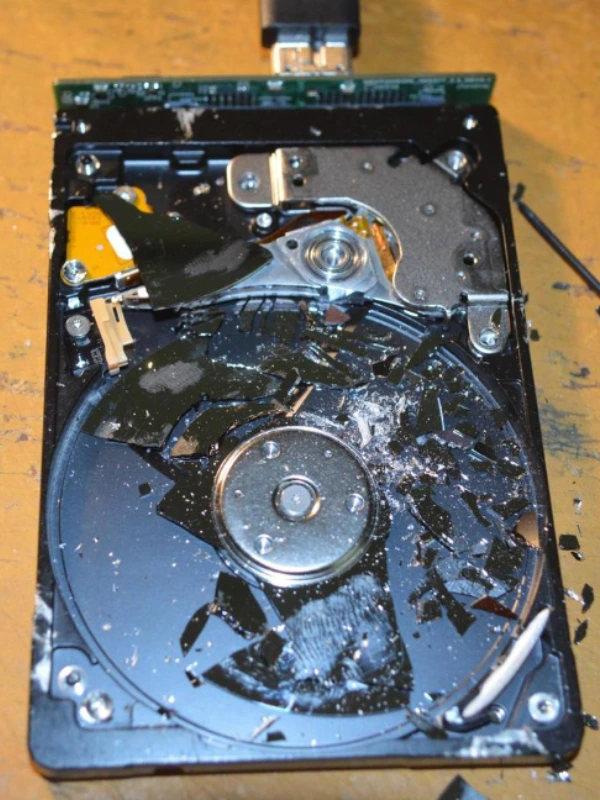In Leeds alone, thousands of computers are replaced every year, by households, offices, schools, and public institutions. But here’s the danger: 68% of these old devices are thrown away or resold without proper data destruction, according to the Yorkshire Cyber Crime Unit’s 2024 report.
This means that nearly 7 out of 10 devices still contain:
Even if you “empty the recycle bin” or “factory reset” the computer, your files remain on the hard drive like pencil marks under an erased note. Simple recovery tools (some free online) can bring it all back in minutes.
In short: deleting isn’t destroying.
This is why certified hard drive disposal service Leeds options are critical, for both personal safety and legal compliance.
Many people try home methods like smashing a drive with a hammer or reformatting it. These seem satisfying, but they often don’t go far enough:
Professional hard disk destruction Leeds providers follow international standards such as:
This ensures total erasure and gives you proof in the form of a Certificate of Destruction or Data Erasure Report.

Looking for trusted hard drive shredding services? Book free collection with the experts - T&M Reuse Yorkshire Limited
The easiest way to stay compliant and safe is to hand your drives to a certified hard drive disposal service Leeds provider.
How to verify they’re legit:
Red flags to avoid:
Why T&M Reuse Yorkshire Limited stands out:
They provide GPS-tracked collection, photo-documented serial numbers, and same-day certificates; plus on-site destruction if you want to watch the process.


When you want zero chance of data recovery, physical destruction is the answer.
Main methods:
A. Shredding
B. Degaussing
C. Drilling/Punching
Why it’s essential:
A 2023 UK study found that 92% of “visibly damaged” drives in second-hand markets still had recoverable data because the platters were intact. Only total destruction removes this risk.
Overwriting works by writing random binary code over every bit of your drive’s storage space multiple times.
Step-by-step for safe overwriting:
Note: For SSDs, use manufacturer-specific secure erase commands for best results.


A hard drive disposal service in Leeds should never just “take your word” that the data’s gone; you need legal proof.
Your Certificate of Destruction/Data Erasure Report should have:
Without this, you could face GDPR penalties if data resurfaces.
Case in Leeds:
A local solicitor’s firm was fined £140,000 when unverified drives containing client case notes were found in a second-hand shop. They had no disposal records.
If the drives hold:
With on-site service:
T&M Reuse Yorkshire Limited offers mobile shredding trucks so you never lose sight of your drives.


Instead of reacting when old drives pile up, make computer hard drive disposal in Leeds part of your business process.
Best practice IT disposal policy:
Benefit: You reduce panic, avoid breaches, and maintain full compliance year-round.
Looking for trusted hard drive shredding services? Book free collection with the experts - T&M Reuse Yorkshire Limited
Every old hard drive is a risk, whether it’s in your desk drawer or a forgotten server rack. But securing that data is not complicated when you follow these six steps:
By working with trusted providers like T&M Reuse Yorkshire Limited, you not only protect yourself from identity theft, fines, and embarrassment — you also keep Leeds’ reputation strong as a secure, responsible city.